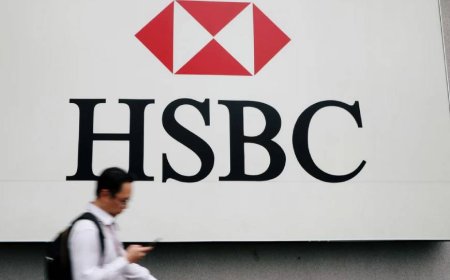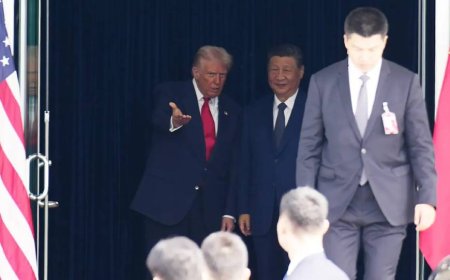National Bank of Cambodia
The National Bank of Cambodia was established in December 23, 1954. After the country gained the independence from French Colony and after the Indochina Printing Institution was closed. The National Bank of Cambodia printed its own national currency of Riel in order to completely terminate the monetary alliance with the Vietnamese and Laos currency. Meanwhile, there was the establishing of loca

The National Bank of Cambodia was established in December 23, 1954. After the country gained the independence from French Colony and after the Indochina Printing Institution was closed. The National Bank of Cambodia printed its own national currency of Riel in order to completely terminate the monetary alliance with the Vietnamese and Laos currency. Meanwhile, there was the establishing of local banking system in which the state banks and private banks operated together in the territory of Cambodia. In 1964, in order to follow the national building policy of the Sangkum Reastre Niyum, the banking system had been gradually reformed to meet the national economy’s requirement by transforming the National Bank of Cambodia from the semi-autonomous institution to the state-owned bank under the form of the public entity with characteristics of industry and commerce, while the national and foreign private banks were closed, and the state established some state-owned banks such as Bank of Inadanajati, Development Bank, and the Rural Agricultural Bank. From the end of the year 1970 to April 1975, the state had liberalized the banking system once again. The private banks were authorized to operate along with the state bank under the regulation and supervision of the National Bank of Cambodia. Unfortunately, on April 17, 1975, the National Bank of Cambodia was closed, the banking system was totally destroyed, the National Bank of Cambodia building was ruined, and the Riel banknotes were no longer used. Until October 10, 1979, the People's Bank of Cambodia called "Bank of Cambodia¨ was re-established as a Central Bank of the Country by sub-decree No 1211 dated October 10, 1979 of the Council of the Revolutionary People of Cambodia. With an effort in overcoming the obstacles by the banking system founders of which H.E Chea Chanto, Senior Minister and General Governor of the National Bank of Cambodia, was also an initial founder of the National Bank of Cambodia. At that time, the People's Bank of Cambodia has been rehabilitated from the Zero, because we had no financial resources, no inheritance or something left such as documents, experience or human resources. The intellectuals were killed, scattered, mentally frightful in working since they feared that there could be a return of the Pol Pot regime. However, the life in a situation of weak health of the people with hardly any decent clothes to wear, in a nervous state of mind and separated from their family members, but through hardly work together every day and night, facing insecurity everywhere, and got technical assistance from allied countries, the bank that can be currently seen was built. Due to the ruined Red Bank, temporary head office of the People's Bank of Kampuchea was opened on the upper floor of the Khmer Bank for commerce. The people’s Bank of Kampuchea set up the leadership structure as well as the operational activities. Furthermore the bank extended to 20-provincial and municipal network in the whole country. The People's Bank of Kampuchea re-issued the Riel banknotes on March 20, 1980 in order to facilitate the goods exchange for daily living of the people and for payment of civil servant’s salaries. During the 1980s, the banking system had only mono-banking system i.e. the People's Bank of Kampuchea had functions as follows: - The monetary authority - The cashier of the Government in the form of the National Treasury, and - The provider of banking services including credit, deposits and payment system. As for ruined National Bank of Cambodia building was removed and rebuilt in 1990. Since 1989, the banking system had been gradually reformed through transforming the 20-provincial and municipal banks into specialized provincial and municipal banks and had been operating with economic and financial autonomy in their territory, the People's Bank of Kampuchea had played its role as monetary authority to direct and supervise these banks. In 1991, the first Commercial Bank (Cambodia Commercial Bank "CCB") was established under the form of state Joint Venture Bank for attracting investors and serving the activity of the United Nations Transitional Authorities in Cambodia (UNTAC). In January 30, 1992, in the 22nd ordinary session, the 1st legislature, the National Assembly of the State of Cambodia adopted the Law on the Change of Organization’s name and duty of the Bank of Cambodia from the People's Bank of Kampuchea to the National Bank of Cambodia, which was promulgated by the council of state in February 8, 1992. The Paris Peace Accord on 23 October 1991 was a political detour of the transforming the economic regime from planning economy to free market economy that made the Cambodia’s banking system transformed from the mono-banking system to the 2-tier banking system. Furthermore the state had completely authorized the banking activities to be operated in Cambodia through establishing the commercial banks under the local laws or under the form of foreign bank’s branches. These required the National Bank of Cambodia to more strengthen its role in improving its management capacity to direct and supervise through having continuously made some Laws and Prakas such as: (1) Law on the Organization and Conduction of the National Bank of Cambodia adopted by National assembly on January 26, 1996. This law specified that the principal mission of the National Bank of Cambodia is to "determine and direct the monetary policy aimed at maintaining price stability". (2) The Law on Foreign Exchange adopted by National Assembly on August 22, 1997. (3) The Law on Banking and Financial Institutions adopted by National Assembly on November 18, 1999. Finally, the National Bank of Cambodia compiled and prepared the Financial Sector Blueprint for 2001-2010 that was the document of Financial Sector Development Strategy in Cambodia for its advance with the public confidence and could be integrated into the global financial system. As a Central Bank, in order to raise its influence and prestige that deserved as the supervisory authority of the banking sector, the National Bank of Cambodia building was renovated in 2003.
Address: PO Box 25, 22-24 Preah Norodom Blvd, Phnom Penh, Cambodia
Phone: +855 23 428105
FAX: +855 23 426117








































































































































